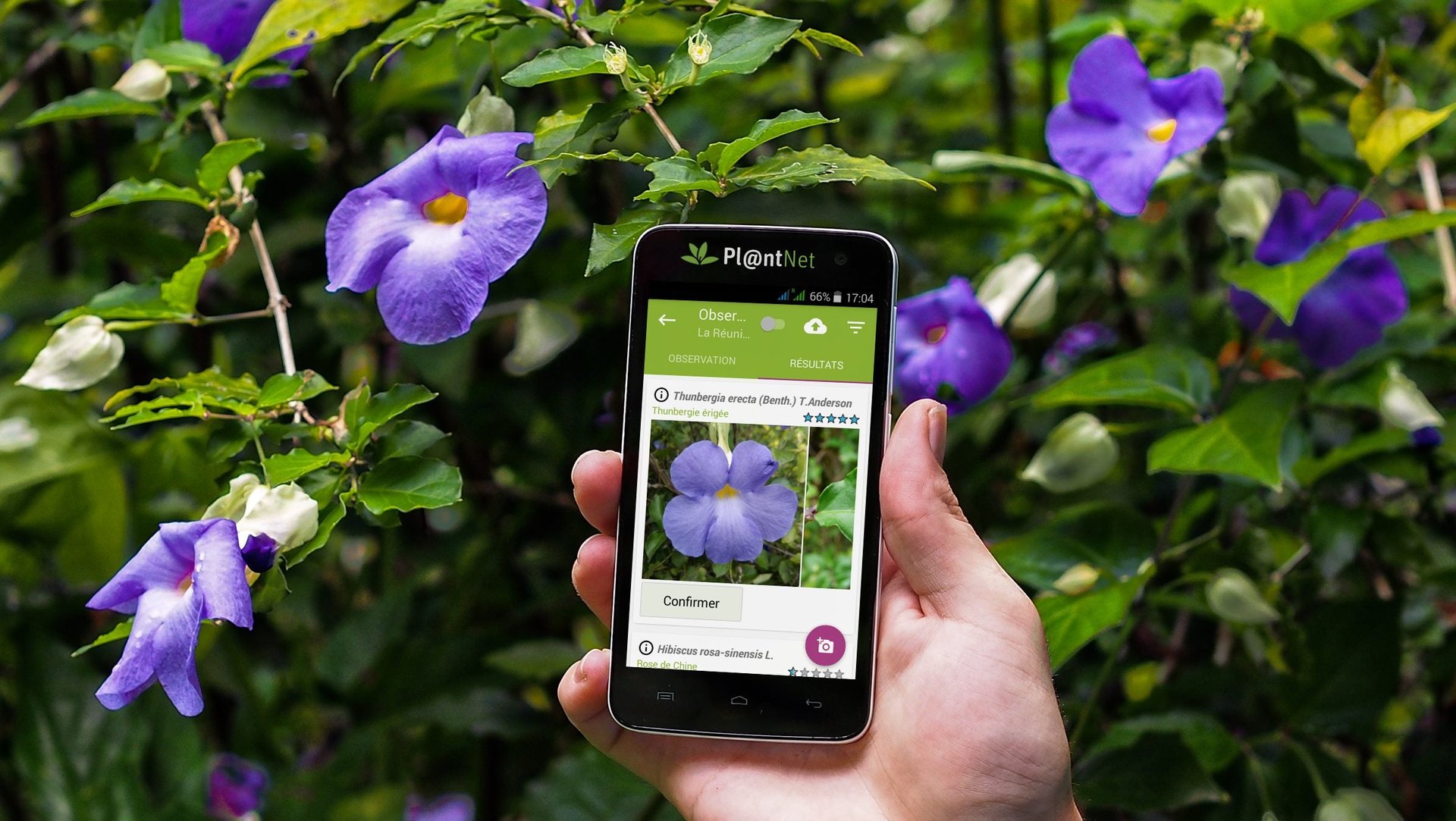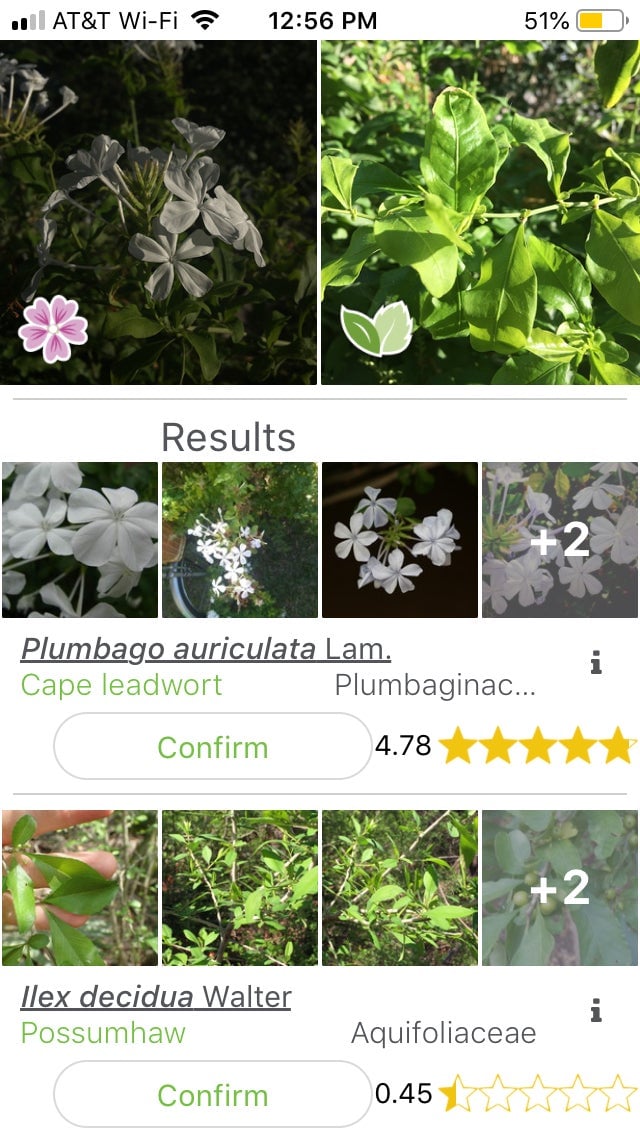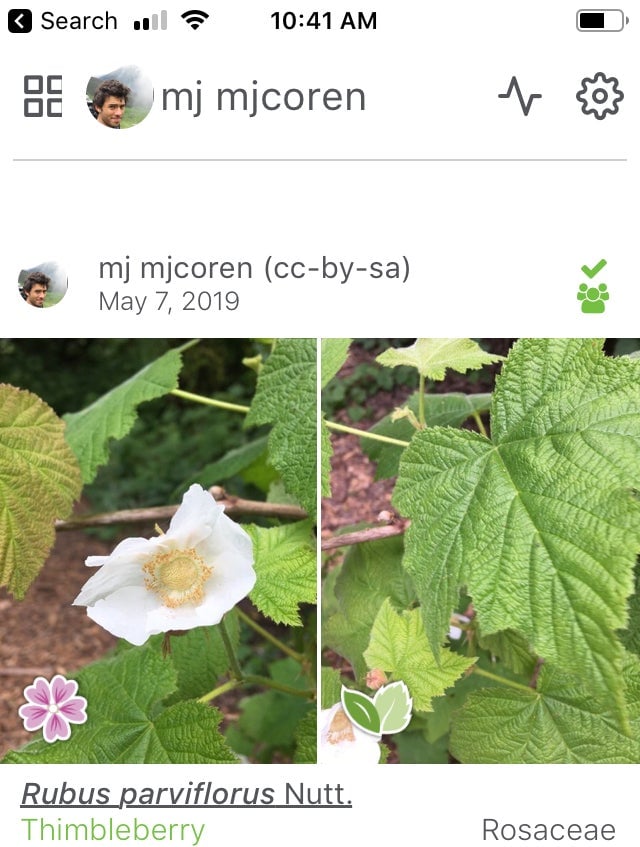Pl@ntNet is the world’s best social network
Pl@ntNet (pronounced plant-net) is the only social app that always makes me happier. Likened to Shazam for plants, it was developed a decade ago by a consortium of computer science and botanical research institutions in France. In almost every way, Pl@ntNet is unlike other social networks.


Pl@ntNet (pronounced plant-net) is the only social app that always makes me happier. Likened to Shazam for plants, it was developed a decade ago by a consortium of computer science and botanical research institutions in France. In almost every way, Pl@ntNet is unlike other social networks.
Here’s how it works: Users snap a picture of a plant, label it (leaves, flowers, bark, stems, or habitat), and then send their digital specimen to the cloud. An algorithm matches the digital image against a massive plant database and presents its best guesses as to what type of plant it is. The user who submitted the original image picks from a list of the most likely candidates, and ranks the probability the image is a match on a five-star scale. The community then vets each image, validating the identification or suggesting a new one. It’s completely free, there’s no advertising, and every image becomes available through a Creative Commons license. Think of it like taking a 19th-century botanical expedition on your phone.

Pl@ntNet is unwittingly on the front lines of a transformation in social media. The original promise of the web—weird, distributed, and open—has yielded to walled gardens: digital platforms tended by massive public companies. Their advertising-driven business models dictate engagement above all else. This has birthed addictive machines that feed off human outrage. Facebook, Twitter, and YouTube set the rules of conversation for billions of people, where those rules are not designed to benefit users, but to maximize engagement. A tweak of an algorithm can amplify or banish entire groups or discussions.
What would social media look like without that engagement imperative? A motley crew of social-media networks is trying to find out. Under the banner of the IndieWeb, they’re building smaller, private, local, and even paid social-media networks that feel little like the desperate, shouty voids they hope to displace. Computer scientist Cal Newport describes these new services, from Micro.blog to Mastodon, as attempts to root out the worst of social media while preserving the best. “The internet may work better when it’s spread out, as it’s designed,” Newport wrote after a TEDx talk on the topic went viral. “In this vision of the future, there will be many more social-media platforms, but far fewer people spending significant time on any of them.” Pl@ntNet (unwittingly) is one of those exemplars.
Plant power
First created in 2009, Pl@ntNet grew in popularity after its free iOS and Android apps were released in 2013. Today, almost 100,0000 daily active users—a number that doubles each year—submit thousands of plant ID requests: 60 million so far, says Pierre Bonnet, co-coordinator of the Pl@ntNet project and a botanist at France’s CIRAD Institute. The amount of botanical data that Pl@ntNet users submit each year is greater than the data collected by France’s entire network of professional botanists in the past decade, Bonnet says.
That’s an unprecedented pace for scientists. Three years ago, Pl@ntNet only contained about 6,400 species, many of them growing near France. The app can now pick out 20,000 species in 26 distinct “projects”—groups of collected species that include everything from the “weeds of Europe” to “Amazonia,” a collection of 1,260 species in French Guiana. As Pl@ntNet users snap and upload about 50,000 photos each day, the system’s algorithms are only getting more refined, rivaling the best experts in their fields. Bonnet says the machine-learning model, trained on 2.5 million photos, can now correctly identify 83% of the plant species in its database, and 91% are in the first five suggestions.
Then there’s the social side. Once a user makes an identification (or marks the plant as unknown), they submit their photos to the Pl@ntNet community. Thousands of professional botanists and flora-philes scan the stream of new observations to verify a species, or suggest a new one. If a person confirms your observation, a little green “crowd” icon appears. Your score rises as more people validate your labels, although a few users are certified to train the algorithm without community validation. (I’m currently ranked 1,840 out of more than 1 million users; I’ve made 144 identifications and had 54 of them validated by the community.)
“We conduct this research activity for the benefit of society; we really don’t want to develop a community only for the sake of community,” says Bonnet. That mission has led to some atypical choices for a social network. Users can’t link their accounts to Facebook. There are no alerts, no avatars, no public profiles. People’s locations are never shared. The only direct communication I have with my fellow Pl@ntNet users is the crowd-verification icon that appears after people review my photos. One such acknowledgment suggested my generic geranium observation near Golden Gate Park was actually a geranium robertianum, commonly known as Wren flower, or Death come quickly (a plant I won’t soon forget). It was a silent smile, passed between nature lovers.

Of course, Pl@ntNet’s expansion to a million users hasn’t been without challenges. Developers looking to make a quick buck can build lookalike apps using Pl@ntNet’s API—kept public in the interest of scientific transparency—and charge customers through the app stores. Some copycats make deceptive claims 1 that they can identify most of the world’s species, even though most of the world’s species have never been discovered, let alone photographed. People also submit inappropriate content as public observations (an algorithm now automatically screens out most of this illicit content).
California dreaming
Pl@ntNet has quickly become my Rosetta Stone for the West Coast. I moved here from Washington DC eight years ago, after years spent living around the world. In each place, I could only name a few of the most common plant species: red maples in Connecticut, white oaks in DC, the ubiquitous Banyon and mango trees in the tropical latitudes. Even after a childhood spent roaming woods and marshes in Florida, I never advanced beyond the basics of wildlife identification.
Pl@ntNet changed that. About three-quarters of the photos I’ve taken in the San Francisco Bay Area are identified instantly. Within a few days of opening the app, I had memorized the most common plants in my neighborhood; after a few weeks, I could identify a fair share of the plants growing along Northern California’s Pacific coast. A once undifferentiated mess of trees and shrubs has magically resolved itself into hundreds of distinct species.
I can now separate the wild radish from the more roguish sea radish. Delineate between the thimbleberry and the European dewberry. Identify a specimen based on the the hue of a petal or the serration of a leaf. At a glance, I can tell between three kinds of forget-me-nots (field, broadleaf, and woodland), or distinguish between a common yarrow and a high mallow. This winter, after weeks of rain watered a carpet of leeks and miner’s lettuce, I collected the ingredients for a wild pesto and salad in the local parks. Pl@ntNet is a tireless tutor, constantly adjusting and correcting my observations; it’s as exciting for me as learning a new language.
Nor is it alone. Digital encounters with the wild world are multiplying. Plant- and animal-identification apps are now all over the web, some of them for-profit. Cornell University’s Merlin Bird ID can identify species from about 70 million bird photos in the eBird database. Even bigger databases are coming online, such as the Global Biodiversity Information Facility, which has documented 1.3 billion observations of the world’s plant and animal species.
Pl@ntNet was built on the premise that data shared by people can make all of us smarter, even though machines are taking on more of the teaching. Every year, Pl@ntNet runs a competition for machine-learning models to identify all sorts of wildlife, from bird calls to flora. Last year, botanist Philippe Jauzein beat out the best algorithm by correctly identifying 96% of images (to the algorithm’s 84%).
But that’s cold comfort for homo sapiens. Bonnet says an algorithm may never outwit a human in botanical specialty, but machines will soon possess the expertise of several experts, a breadth of knowledge against which humans have no chance. As recently as 2015, human experts were beating almost every algorithm in Pl@ntNet’s competition. In 2018, machines were outperforming more than half the human experts.